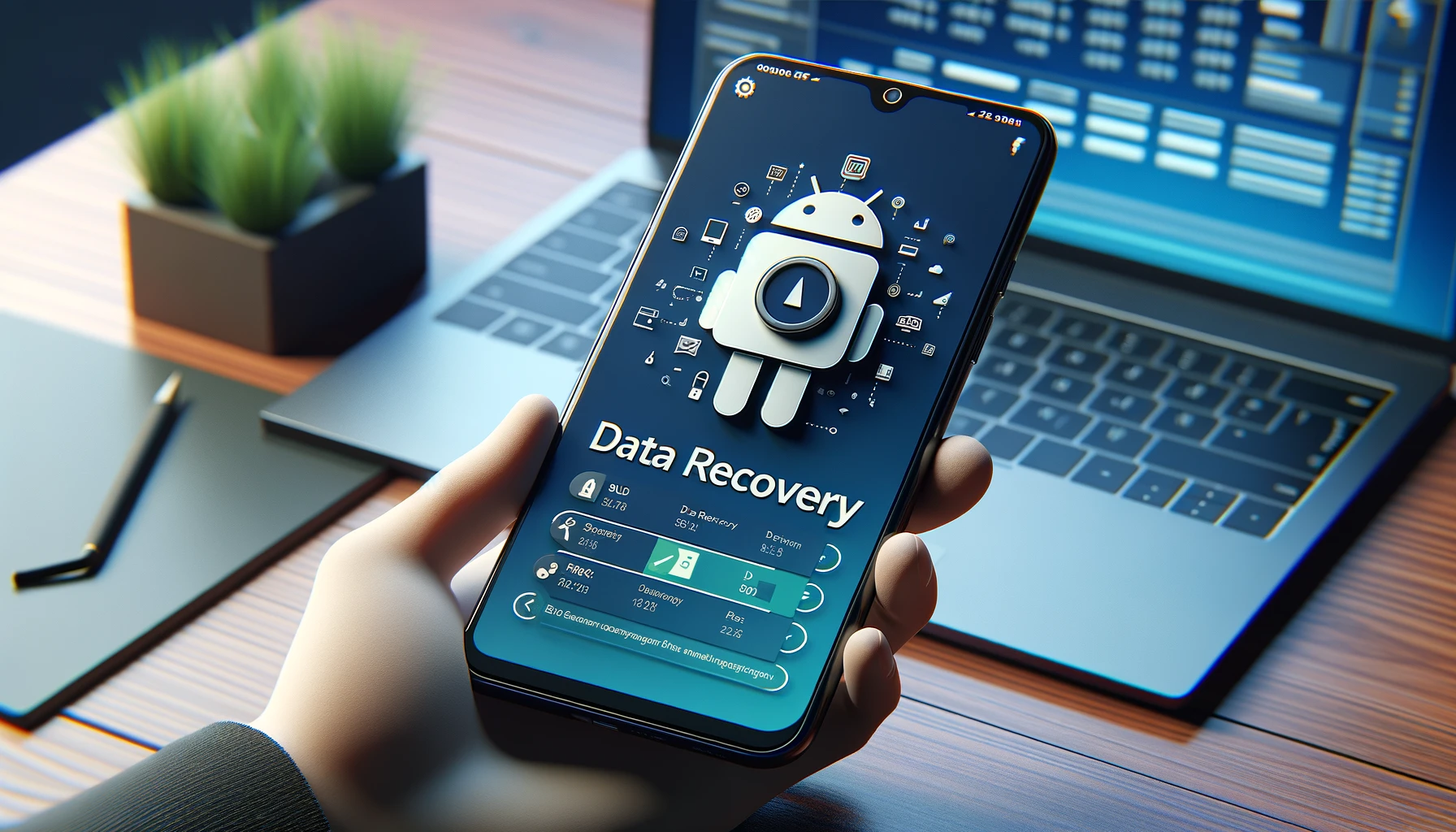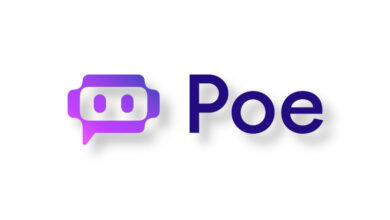The Best Data Recovery Software for 2024

What is data recovery software?
Living in today’s realm of modern technology, data has immense significance, serving as the backbone of our personal and professional lives. However, with the ever-increasing reliance on digital storage, the risk of data loss has also skyrocketed. Accidental file deletion, hardware failures, system crashes, and malicious attacks can erase valuable information in the blink of an eye. In such dire situations, data recovery software emerges as a ray of hope, capable of recovering lost data and restoring files from various storage media, including external storage devices.
Unraveling the Essence of Data Recovery Software:
Data recovery software is a specialized application designed to recover lost or deleted data from different storage devices. Using advanced algorithms, this software digs deep into storage media, looking for traces of files that appear to be unrecoverable.
The Role of Data Recovery Software in File Restoration:
When a file is deleted or lost, it is not immediately deleted from the storage media. Instead, its presence becomes hidden, making it inaccessible by regular means. Data recovery software performs a meticulous search, meticulously scanning the storage device for these hidden remains. By piecing together fragments of lost data, the software facilitates the recovery of files that were once considered unrecoverable.
The Importance of Data Recovery Software for USB Flash Drives:
USB flash drives have revolutionized data portability and convenience, becoming a staple for users around the world. However, their compact size and ease of use also make them susceptible to data loss. Accidental formatting, sudden removal during data transfer, or other unexpected events can lead to loss of critical files. In such situations, data recovery software emerges as a crucial tool, offering a lifeline for recovering important data from these tiny yet indispensable devices.
Exploring the data recovery process:
Using data recovery software is relatively simple. When launching the application, users select the target storage device from which they want to recover data. The software then launches an exhaustive scan, meticulously sifting through your device’s data structures to locate hidden traces of lost or permanently deleted files. The scanning process may take some time, depending on the size of your storage space and the extent of data loss.
Once the scan is complete, the data recovery software presents users with a complete list of recoverable files. Users can then preview items and choose the specific files they want to recover. The range of recoverable data ranges from photos and videos to critical documents and presentations, encompassing different file types that users care about.
Although data recovery software offers a promising solution for recovering lost files, several factors influence its success rate. Prompt action is essential, as the chances of success of data recovery solutions decrease over time. Users are advised to start the recovery process as soon as they detect data loss. Furthermore, to avoid overwriting data and reducing the possibility of recovery, it is crucial not to save the recovered files again on the same storage device.
What are the different types of data recovery software?
There are data recovery methods depending on the problem and the type of data stored. Let’s examine each of them to understand more.
- Logical Data Recovery: This method is used when the problem lies with the computer, rather than the hard drive itself. It happens when the hard drive is still functional. Some data has been lost or corrupted.
- Physical Data Recovery: When your hard drive is physically damaged, you will need the help of data recovery professionals. They are experienced in rebuilding the firmware to recover and transfer data, so that it works as before.
- Hard Drive Recovery: This is a technique for recovering data from HDD or SSD drives, but it can be quite complex. To ensure recovery, it is recommended that you seek assistance from a provider who specializes in working with advanced data recovery tools and can back up damaged or deleted files.
- Optical Recovery: Optical storage media such as CDs and DVDs require specialized data recovery solutions. Working with specialized storage experts increases your chances of recovering lost data from these types of media.
- Instant Data Recovery: With this method, when you lose your data, you are immediately directed to a server, where you can access a snapshot of your precious data. The IT team then manages the recovery process in the background using the appropriate data recovery app.
These various data recovery software options adapt to disruptive scenarios and offer solutions tailored to specific needs, for recovering lost or damaged data, because we all know how important all your personal data is. Losing data stored for years can feel like losing a piece of your life’s memories and surely no one wants to experience this situation.
What are the main differences between free data recovery software and paid data recovery software?
The main differences between free data recovery software and paid data recovery software lie in their features, performance, technical support, and overall stellar data recovery experience. Here are the main distinctions and advantages you should consider when choosing whether to use the free or paid version of this type of software.
Features and functionality:
Free tools often provide basic file recovery functionality and may have limitations on the number of files you can recover or the total size of the data. They may not have advanced features such as deep scan, partition recovery or selective file recovery. In other words, it may work great, but it won’t recover all deleted files.
On the other hand, paid software generally offers a more comprehensive set of file recovery software features, including advanced recovery options, in-depth scanning, partition recovery, and support for a wider range of file types. They are often more powerful and versatile in handling various data loss scenarios. So they are more relevant in case you need to recover lost data.
Recovery success rate:
While free tools can be useful in simple data loss cases, they may not have the same level of effectiveness as paid versions. You may lose more data or recoverable files or have a lower success rate in difficult recovery situations.
Paid software tends to have higher recovery success rates due to their advanced algorithms and continuous updates. They are more likely to recover information from a wider range of file types and effectively handle complex data loss scenarios.
Data recovery speed:
Free tools may have slower data recovery speeds than their paid counterparts. This is because paid software often uses advanced optimization techniques to speed up the recovery process. Paid software is usually optimized for speed and efficiency, making the recovery process faster, especially when dealing with larger storage devices or extensive data loss scenarios.
Technical support:
Free versions usually do not have dedicated technical support. If you have any problems or questions, you may need to rely on community forums or online documentation for assistance. Paid software typically comes with professional technical support, via email, live chat, or phone. This can be invaluable when you face complex data recovery challenges or need expert guidance.
Updates and upgrades:
Free tools may receive updates, but they may be less frequent and not as feature-rich as the updates provided for paid versions. On the other hand, paid software often receives regular updates and improvements, ensuring compatibility with new operating systems, file systems, and devices. Additionally, you may have access to major updates with new features at no additional cost.
User Experience and Interface:
User interfaces using the free version may be simpler and less user-friendly than paid software, which may have more intuitive and visually appealing interfaces.
On the other hand, paid software usually invests in providing a better user experience, with simpler interfaces and guided recovery processes.
In summary, free data recovery software can be a viable option for simple data recovery needs and budget-conscious users. However, if you need more advanced features, higher success rates, faster recovery speeds, and dedicated technical support, it’s often worth investing in a paid data recovery solution. Ultimately, the choice depends on your specific data recovery requirements and the importance of the data you need to recover.
Compatibility
One of the most important aspects is the compatibility of the best data recovery software. So let’s see what are the pros and cons of using this type of software and what are the compatibilities?
- Total data recovery limit: In addition to the per GB limitation, the data recovery software may also impose a total data recovery limit for the entire recovery process. For example, the software may allow you to recover up to 2 GB of data in total, regardless of the size of your storage space, but not all deleted files.
- Number of recovery sessions: Some data recovery software may limit the number of recovery sessions allowed. Each recovery session may have its own data recovery limit, and once the maximum number of sessions is reached, further recovery attempts may not be allowed.
- Reduced features in free versions: Free or trial versions of data recovery software may offer reduced features or limitations on advanced recovery options. For example, deep scanning or recovery from specific storage devices might be limited to the paid version.
- Time-based limitations: In some cases, data recovery software may have time-based limitations for free versions, such as a free trial that only allows data recovery for a limited period (for example, 30 days). After the trial period expires, you may need to purchase the software to continue data recovery.
- Watermark or Partial Recovery: Some data recovery software may allow you to preview recoverable files in the free version, but impose limitations on actually recovering files. In these cases, you may be able to recover only a portion of the files or encounter watermarked files that are fully accessible only in the paid version.
It is important to carefully read the terms and conditions of the data recovery software to understand the limitations before use. If you plan to recover a significant amount of data or need more advanced data recovery solution options, consider investing in the full version of the software or exploring professional data recovery services for more comprehensive assistance.
Support different environments for data recovery
Data recovery software typically has the ability to access the structure of a drive. It can extract data from damaged storage devices or files and folders that have been destroyed by examining the records and entries in the file architecture. In addition to being able to control and access file types and structures, it can also. Repair partitions on hard drives.
This software is often used to restore data, files and directories that have been created by both users and the system itself. It is capable of recovering data from a wide range of storage devices, including drives, flash drives, memory cards and tape drives. So why is data recovery software needed?
Nowadays, most organizations store their data in the cloud. Additionally, many people automatically save files to USB sticks or external hard drives. However, if a disk failure occurs or a drive becomes damaged in some way, specialized data recovery software becomes essential to recover lost files and folders. Therefore, having a data recovery strategy is very beneficial, for any user and organization. Fortunately, there are high-quality data recovery tools that organizations can use.
If partial data loss occurs, these software tools can help recover files with minimal negative consequences. Even if you have a data backup service it is advisable to equip yourself with a data recovery tool, easily accessible in case the worst case scenario occurs. The best data recovery software enables quick and easy recovery of lost files and folders on devices such as desktops, smartphones and storage media. It is crucial to make the right choice by selecting the best data recovery software on the market.
Usage limitations (per GB)
Limitations imposed on the amount of data that can be recovered are another key aspect to look for, when choosing suitable data recovery software. These limitations are typically based on data size and are expressed as restrictions on the maximum data recovery per gigabyte (GB). Here are some common usage limitations in data recovery software based on data size, which you need to consider carefully. Let’s explore them in detail and have a better view of the whole picture.
Data Recovery Limit per GB: Some data recovery software may have a specific limit on the amount of data that can be recovered per GB of storage capacity. For example, a free version of data recovery software might allow you to recover up to 500 MB of data per GB of storage space. This means that if you have a 100GB storage device, you can recover up to 50GB of data with the free version.
Total data recovery limit: In addition to the per GB limitation, the data recovery software may also impose a total data recovery limit for the entire recovery process. For example, the software may allow you to recover up to 2GB of data in total, regardless of the size of your storage space.
Number of recovery sessions: Some data recovery software may limit the number of recovery sessions allowed. Each recovery session may have its own data recovery limit, and once the maximum number of sessions is reached, further recovery attempts may not be allowed.
Reduced features in free versions: Free or trial versions of data recovery software may offer reduced features or limitations on advanced recovery options. For example, deep scanning or recovery from specific storage devices might be limited to the paid version.
Time-based limitations: In some cases, data recovery software may have time-based limitations for free versions, such as a free trial that only allows data recovery for a limited period. After the trial period expires, you may need to purchase the software to continue data recovery.
It is important to carefully read the terms and conditions of the data recovery software to understand the limitations before use. If you plan to recover a significant amount of data or need more advanced recovery options, consider investing in the full version of the software or exploring professional data recovery services for more comprehensive assistance.
Also, Read:
Recover deleted files vs restore from backup
Recover Deleted Files” and “Recover from Backup” are two different data recovery methods used to recover lost or deleted data. Let’s compare the two approaches:
Recover Deleted Files:
Deleted file recovery refers to the process of recovering files that have been accidentally or intentionally deleted from a storage device, such as a computer hard drive, USB flash drive, memory card, etc. How does it work? When a file is deleted, it is usually not removed from the storage device immediately. Instead, the file’s reference in the file system is marked as deleted, and the space it occupies is considered available for writing new data. As long as new data does not overwrite the space, the contents of the deleted file remain intact.
How does the recovery process work? To recover deleted files, data recovery software is used to scan the storage device and locate files with the original content still present. The software can then restore these files, making them accessible again. Deleted file recovery is useful in scenarios where data was accidentally deleted, a file was lost due to a software problem, or files were intentionally removed but later needed.
Restore from backup:
The process involves several approaches to restore files from a previously created backup copy of the original files and system settings. The backup is typically stored in a separate location, such as an external hard drive, cloud storage, or network attached storage (NAS). Regular backups are created to ensure that a copy of your data is available in the event of data loss or system failure. These backups can be full system backups or incremental backups, which only store changes since the last backup.
To restore from a backup, you need to access the backup location (e.g., external drive, cloud storage) and use your backup software or native backup utility to restore the data to the original location. It is ideal for significant data loss events, such as hardware failures, system crashes, malware attacks, or when migrating data to a new device. It allows you to restore the entire system, including the operating system, settings, applications and files, to a previous state.
Windows File Recovery vs Professional Data Recovery Software
While Windows File Recovery is a quick and easy option for basic file recovery, it may fall short in complex data loss situations. To ensure maximum data recovery chances, choose professional data recovery software. Its advanced features, reliability and expert support will be your best option to safeguard your precious data. When it comes to data recovery, make the right choice that aligns with your needs and protects your data effectively. Now, we will look at both processes in detail.
Windows File Recovery Software:
Developed by Microsoft, Windows File Recovery is a free data recovery tool. You can download it from the Microsoft Store. The main purpose of Windows File Recovery is to help Windows users recover deleted files, lost files and files from damaged disks. It works best with NTFS file systems, commonly used in Windows installations. Another fact is that Windows File Recovery works via a command-line interface (CLI) which may be less user-friendly for users who are not familiar with command-line operations. This tool is mainly designed for home users and people who need to recover deleted files or lost data without dealing with the complexities that come with data recovery scenarios.
Professional Data Recovery Software:
Developed by third-party companies, professional data recovery software is typically created and offered by data recovery companies such as EaseUS Data Recovery Wizard, Stellar Data Recovery, R Studio, but the best software on the market is undoubtedly Acronis Cyber Protect Home Office. Professional data recovery software is designed to handle a variety of situations where data loss occurs. It can effectively recover data, from formatted drives, corrupted partitions, system crashes and hardware failure scenarios.
These software tools are designed to support file systems such as NTFS, FAT32, exFAT, HFS+, APFS, ext2/3/4 (Linux) and others. This versatility makes them suitable for storage devices and operating systems. When it comes to data recovery software, the focus is on providing user interfaces. They typically come with step-by-step guides and intuitive options that make it convenient for users to initiate and manage the recovery process.
The professional software is aimed at IT professionals, businesses and individuals who require recovery features and greater control over the recovery process. So, now that you have a better understanding of the pros and cons of both recovery tools, you can make a clear choice depending on your personal needs.
Why is data recovery software important?
Nowadays, data has value as it plays a crucial role in our personal lives and business operations. However, data vulnerability to deletion, hardware failure, and other unexpected events poses a risk. This is where the importance of data recovery software comes into play. It acts as a tool to safeguard our information and most cherished memories.
Data recovery software is crucial for recovering lost or deleted data from storage devices, such as hard drives, SSDs, USB flash drives, memory cards and more. Faced with data loss, whether caused by errors or technical problems, can be distressing. Fortunately, data recovery software comes to the rescue by scanning storage media for traces of lost or deleted files.
Accidental file deletions are quite common and can happen to anyone. With the help of recovery software, users can easily recover these files. Relieve the anxiety and frustration caused by data loss. Additionally, this software supports file systems that ensure compatibility with storage devices and platforms such as Windows, macOS, and Linux.
Apart from recovering deleted files, data recovery software proves indispensable when dealing with complex scenarios, such as partition loss or data loss due to formatting errors. The software is designed to delve into storage media by effectively detecting and restoring inaccessible partitions. This invaluable tool saves data that might otherwise be rendered unreachable.
When files are permanently deleted from Recycle Bin (Windows) or Recycle Bin (macOS), data recovery software comes to the rescue. Despite appearing unrecoverable, these deleted files can actually be restored with the help of recovery software.
Furthermore, it offers the ability to create disk images of storage devices. This serves as a measure to ensure a backup before attempting any data recovery. This way, the original data remains unaltered throughout the recovery process, minimizing the risk of loss.
In summary, in our life, data recovery software plays a role in safeguarding against the terrible consequences of data loss. It allows users to recover their professional files, memories and data while providing complete peace of mind in the circumstances. Be it file deletions, lost partitions or deleted file recovery.
Who uses data recovery software?
How does data recovery software work? This type of software is a valuable tool used by individuals and professionals on various platforms, including Windows, Mac, and Linux. Anyone who has suffered data loss can benefit from this indispensable solution. Whether it is recovering accidentally deleted files, lost partitions or permanently deleted data, data recovery software provides a lifeline to restore precious files and safeguard precious memories.
With the ability to create disk images for safer recovery attempts, data recovery software provides peace of mind and data security in the face of unexpected data loss. Nowadays, everyone should have an option to recover their data in case of unexpected situations such as file deletion.
Why is data recovery software essential for businesses?
Data recovery software is crucial for businesses for several compelling reasons. In the modern digital age, data plays a critical role in business operations, decision making, and overall success. Here’s why data recovery software is essential for businesses:
One of the main reasons is that it minimizes downtime. In case of data loss or file loss, incidents, whether due to accidental deletion, hardware failure or cyber attacks, can lead to significant downtime for businesses. The software helps minimize downtime by quickly recovering lost data and recovering permanently deleted files, allowing businesses to quickly resume their operations.
Furthermore, it protects business continuity, which is essential for every organization. Data loss events can disrupt business continuity, causing financial losses and potential reputational damage. In itself, the software acts as a safety net, ensuring the recovery of critical data and minimizing the impact of data loss on business operations.
On the other hand, it improves cost-effectiveness enormously. Professional data recovery services are expensive, especially for businesses dealing with large amounts of data. Data recovery software offers a cost-effective solution, allowing businesses to perform data recovery internally without the need for expensive external services.
Businesses often handle sensitive customer data, and any loss of this data can erode customer trust and credibility. Recovery software helps ensure that customer information remains safe and recoverable, promoting trust with customers.
Another key benefit is providing better compliance and legal requirements, because in many industries companies are subject to regulatory requirements and legal obligations to protect and retain data. Recovery software helps meet compliance standards by ensuring critical data is recoverable and accessible when needed.
One of the most important benefits is that it protects intellectual property, because companies often store valuable intellectual property, proprietary information, and research data. And recovery software safeguards these assets by allowing companies to recover lost or deleted intellectual property in the event of an accident or cyber attack.
Additionally, it provides quick recovery from cyber attacks. In the event of a ransomware attack or other forms of data breach, data recovery software can help restore encrypted or deleted files without paying the ransom, reducing the impact of the attack on your computer. agency.
Why is data recovery software essential for home users?
Data recovery software is crucial for home users for several important reasons. While data loss can happen to anyone, home users are especially vulnerable to accidental deletions, hardware failures, and other data loss scenarios due to frequent use of personal computers, smartphones, and other digital devices. So, having this kind of software in hand can be life-saving for your precious data, photos, videos and audio files, because we all know how painful it can be to lose data stored for years.
Why should managed service providers (MSPs) be careful when choosing data recovery software?
Managed Service Providers (MSPs) are responsible for maintaining the functioning of their customers’ IT systems and managing their data. Data recovery is part of the services offered because businesses depend on MSPs to protect and recover their data and different file formats in case of unexpected data loss. As a result, MSPs need to be cautious and scrupulous when choosing data recovery software.
What should you look for when choosing the best data recovery software?
Data loss can be a nightmare, but the right data recovery software can turn it into a minor hiccup. When selecting the best solution for your needs, consider these essential factors:
Look for software that supports various file systems and file types, ensuring it can handle your specific data recovery requirements. Another thing to look for is easy-to-use software that simplifies the recovery process, even for non-tech-savvy users. You need to choose a solution that ensures data integrity, preventing further damage during the recovery process.
On the other hand, you have to make sure that the software is compatible with your operating system and the storage medium from which you need to recover data. One of the most important things to look for is the ability to preview recoverable files and select specific items for recovery, because it saves time and storage space. Increased scanning and recovery speed are other key benefits to look for, especially for large volumes of data.
Plus, reliable customer support ensures you get expert assistance whenever you encounter challenges. And last but not least, check reviews and testimonials to gauge the software’s performance and user satisfaction. If you take these key factors into consideration, you will have the opportunity to select the best software for you or your organization.
What is the most effective data recovery software?
According to the latest research done in 2023, it is difficult to pinpoint one data recovery software as the “most effective” because the effectiveness of data recovery software may vary depending on several factors, including the specific data loss scenario, the type of storage device and the file system used. Different data recovery software can excel in different areas, making it difficult to declare one as the best data recovery overall, for all situations. This tool will also recover lost partitions if they have not yet been overwritten. We can recommend the most complete and intuitive user interface software: Acronis Cyber Protect Home Office. It can protect your data and recover it in case of unexpected situations.
When selecting data recovery software, you should consider factors such as its ability to recover data, compatibility with your operating system and file system user interface reviews from other customers, and the availability of technical support.
Furthermore, it would be advantageous to opt for a software that provides a free trial version so that you can evaluate its effectiveness in recovering your data before making a purchasing decision.
What is the best data recovery software for SSD?
With unmatched prowess, Acronis Cyber Protect Home Office has earned a reputation as a savior of precious files, documents and memories on SSD. Designed specifically for SSDs, this amazing software boasts a lightning-fast recovery process, ensuring your precious data is back in your hands before you can even blink.
Ease of use is the watchword of Acronis Cyber Protect Home Office. Its intuitive interface guides you through your recovery journey, even if you’re not a tech whiz. No more headaches or frustration, just seamless data recovery at your fingertips.
The highlight is its compatibility. Acronis Cyber Protect Home Office integrates seamlessly with all major SSD brands, leaving no room for compatibility issues – Acronis has you covered.
So, why lose sleep over lost data? Adopt Acronis Cyber Protect Home Office, your trusted companion in the quest for data recovery. Let your precious files breathe again and watch as this amazing software weaves its magic, bringing your data back from the brink. Say goodbye to worries about data loss and unlock the full potential of your SSD with Acronis Cyber Protect Home Office.
Can you trust data recovery software?
Determining the reliability of data recovery software is mainly based on factors, such as its reputation, the company or developer responsible, and user feedback. However, it is crucial to exercise caution and conduct research when selecting data recovery software. Consider the following factors to evaluate whether a particular file recovery software can be trusted:
Reputation and reviews: Look for data recovery software that has collected reviews from both users and experts. Online testimonials and reviews can provide insights into user experiences with partition recovery software.
Developer or company: Consider the reputation and history of the developer or company behind the data recovery software. Established companies with industry experience are more likely to offer reliable software.
Data Privacy: Since data recovery deals with information, it is essential that any software you choose prioritizes data security and privacy. Make sure the software incorporates encryption methods and adheres to industry practices to safeguard the recovered data.
Know: Reputable data recovery software vendors are upfront about their product features, limitations, and pricing structure. Be wary of software that makes claims or hides important details. data recovery utility, personal use.
Free trial version: Look for data recovery software that offers a free trial version that allows you to evaluate its performance before committing to the purchase.
By considering these factors, you can make a decision when choosing a data recovery software solution. Before making a purchase it is important to test the effectiveness and compatibility of the software with your system. When it comes to support, a reliable data recovery software should have helpful assistance available for users throughout the recovery process.
Regular updates are essential to ensure that the software remains compatible with supported file systems and storage technologies. Reputable vendors prioritize updates and maintenance to fix any bugs and improve performance. Having a friendly user interface is crucial for data recovery software. It instills confidence by simplifying the recovery process and reducing the chance of user error.
To further boost confidence, some reliable data recovery software providers offer a money-back guarantee, which demonstrates their confidence in its effectiveness. In conclusion, you can trust data recovery software if you opt for a provider with user reviews. Look for transparency in their approach to data security and privacy. Conduct research, read reviews. Consider testing a free trial version before deciding whether the software is reliable for your specific data recovery needs. Remember to have a backup of your data as an added precaution, against potential loss incidents.
Best Data Recovery Software for 2024
Make sure you back up your data, because it’s really important. I can’t stress this enough, always have a backup of your data and use a data recovery software application. This way you will never have to worry about using hard drive recovery software or losing files. You won’t waste time or money trying to figure out what to do if you ever encounter a “lost file” emergency situation. The best part is that you will have peace of mind knowing that all your data. Files, videos, photos, operating system and settings. They are fully protected at all times.
Be prepared because data loss can happen at any time. Think of all the ways you could lose your data. For example, how many times has your computer crashed due to a hardware problem such as a disk drive failure?
A recent study shows that three-year hard drive survival rates can range from 97% to 74% depending on the manufacturer and model. This means that, in a worst-case scenario, one in four drives could crash within three years and cause data loss. Remember, relying on data recovery software won’t help if your hard drive fails; It will require assistance that comes at a high cost for professional services and could leave you without access to your computer, for days or even weeks.
Here’s a tip; It is important to be prepared and take steps to back up your system. Consider using software like Acronis Cyber Protect Home Office (formerly known as Acronis True Image). There are reasons why backing up your data is critical, beyond avoiding potential hard drive failures. These reasons include protection from user error, security breaches, viruses, loss or theft of your device, natural or man-made disasters, software errors, and problems with software and hardware updates. It is very likely that sooner or later you will encounter one of these events.
Acronis Cyber Protect Home Office is the leading personal backup software that protects your Windows and Mac systems. It backs up everything, including your operating system, programs, settings, files and startup information via image backup . With just a few clicks, you can back up to drives, NAS devices, network shares, and even the cloud.
Furthermore, it offers the possibility to safeguard smartphones and tablets by backing up iPhone, iPad and any Android device. You can also remotely backup others’ data anywhere in the world. Manage everything effortlessly through a touch-friendly online dashboard. In every single case when you need it, you can easily recover a file or restore the entire system.
With Acronis Cyber Protect Home Office, you also have the ability to recover data from your family’s devices that have been backed up in the cloud. These devices include Windows and macOS computers, smartphones, and tablets.
By using cloud backups, you get the convenience of accessing your files via a web browser. Continuing your work seamlessly on any computer you prefer. Furthermore, in addition to ensuring recovery of all data from the circumstances that caused it to be lost, Acronis Cyber Protect Home Office offers a cost-effective solution compared to most hard drive recovery software available in the market.
Why spend up to $99 on data recovery software that can’t guarantee a recovery when you can pay half that price for a backup solution that guarantees complete recovery of all your data anytime, anywhere? Plus, it’s incredibly easy to use and there’s no reason to hesitate if it’s the best option for you, yes, it is.






